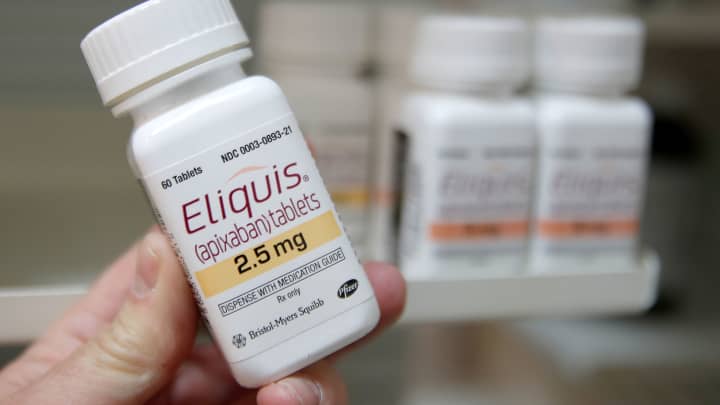
Some drugmakers have confirmed their intention to bring their legal battle to the nation's highest court.
"As we look forward, we're going to take this to the fullest, which means we'll take it through District Court and, if need be, into Circuit Court and ultimately to the Supreme Court," Merck CEO Robert Davis said during an earnings call earlier this month. "So, really that's the strategy."
Merck, in a statement on Tuesday, called the drug price talks "bad policy" that will stifle pharmaceutical research and development and "have potentially devastating consequences for the millions of patients who need new therapeutic options."
Still, the company said it's committed to working with the government to "enable patient-focused innovation, value, and access."
Meanwhile, the Biden administration has vowed to fight the legal challenges.
Biden and his top health officials have embraced the lawsuits as evidence that they're making progress in the fight to cut drug prices.
On Tuesday, he said drugmakers are hoping the federal courts "will do what Democrats in Congress wouldn't do. Protect the exorbitant profits and keep negotiations from happening."
"We're going to see this through. We're gonna keep standing up to big pharma and we're not going to back down," the president said at the White House.
Among the 10 drugs listed, for the period from June 1, 2022, to May 31, 2023, Medicare Part D spent the most on Eliquis, at $16.5 billion, according to a .
The plan also spent roughly $7 billion on Jardiance, $6 billion on Xarelto, $4 billion on Januvia and $3.2 billion on Farxiga during that same time period, the fact sheet said. Spending for Entresto, Enbrel, Imbruvica, Stelara and the two insulins came in at more than $2.5 billion each.
In the calendar year 2022, more than 3.5 million enrollees used Eliquis and paid $441 out-of-pocket on average for the blood thinner, according to a separate , from the Department of Health and Human Services' Office of the Assistant Secretary for Planning and Evaluation, or ASPE.
Roughly 1.3 million enrollees used Jardiance in 2022, paying $290 out-of-pocket on average, the ASPE fact sheet said. About 1.3 million beneficiaries used Xarelto and paid $451 out-of-pocket on average.
Far fewer enrollees used Imbruvica and Stelara in the same year, at 22,000 and 20,000, respectively, according to the ASPE fact sheet. But enrollees paid the most out-of-pocket for those drugs: $5,247 for Imbruvica and $2,058 for Stelara on average, the ASPE fact sheet said.
Meanwhile, 763,000 enrollees used Novo Nordisk's two insulin products in 2022 and paid $121 out-of-pocket on average, according to the ASPE fact sheet.
Some drugmakers disputed the data the Biden administration used. A Bristol-Myers spokesperson said the spending numbers for Eliquis "fails to take into consideration all rebates, discounts, and fees paid to Medicare and Part D plans."
The spokesperson said the number CMS cited is "more than three times the actual Medicare spend on Eliquis in the U.S.," without providing additional information or data.
A handful of drugs on the list came as a surprise, including Farxiga and Stelara. Wall Street analysts and health policy researchers had been expecting other names, such as Eli Lilly's diabetes drug Trulicity or Xtandi, a rheumatoid arthritis medication from Astellas Pharma.
A senior administration official said the list likely diverged from predictions due to changes in Medicare Part D spending.
"Data may now have fallen lower on the list because utilization may have dropped off in the last year or other drugs may have become more common," the official said during the call.



